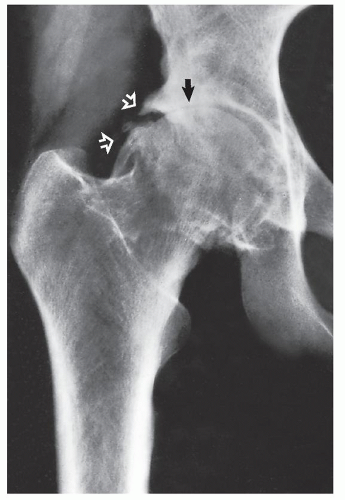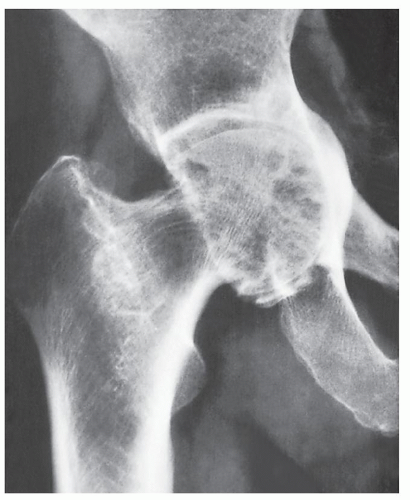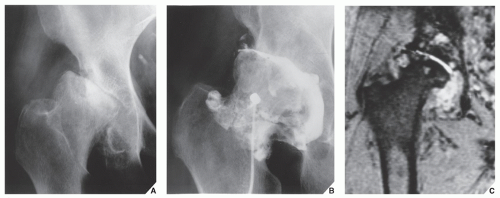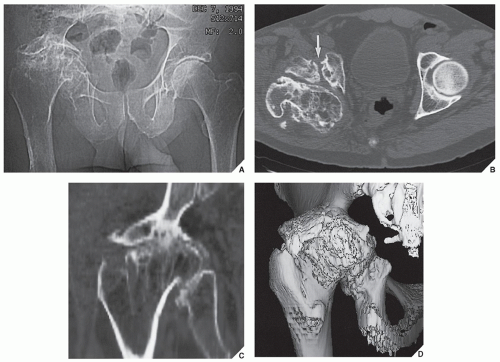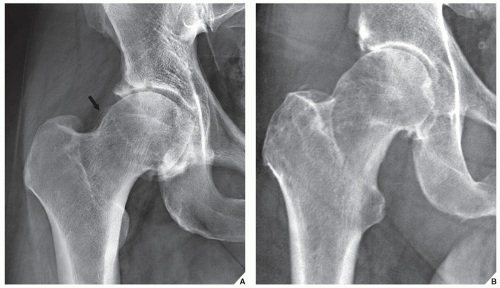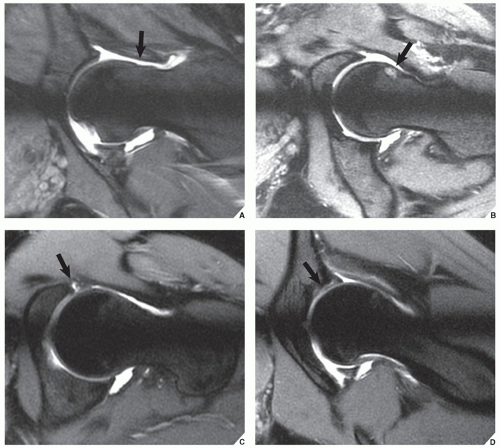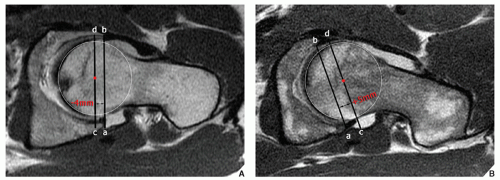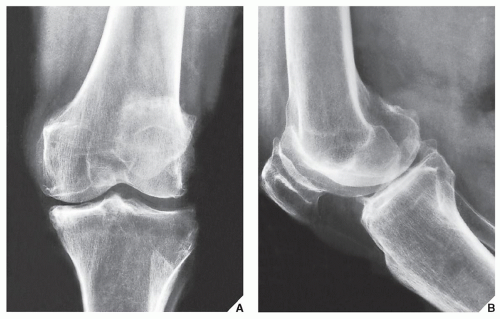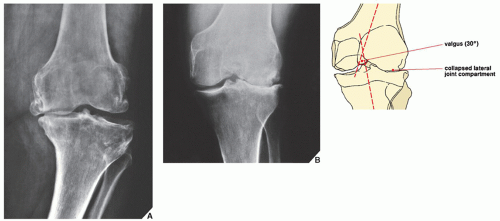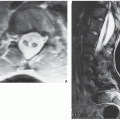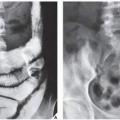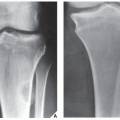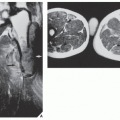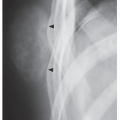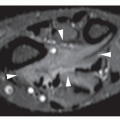Narrowing of the joint space as a result of thinning of the articular cartilage
Subchondral sclerosis (eburnation) caused by reparative processes (remodeling)
Osteophyte formation (osteophytosis) as a result of reparative processes in sites not subjected to stress (so-called low-stress areas), which are usually marginal (peripheral) in distribution
Cyst or pseudocyst formation resulting from bone contusions that lead to microfractures and intrusion of synovial fluid into the altered spongy bone; in the acetabulum, these subchondral cyst-like lesions are referred to as Eggers cysts
superolateral or superomedial; medial; and axial (Fig. 13.4). The most common pattern is superolateral migration; the medial pattern is less common, whereas axial migration is only exceptionally seen. It should be kept in mind, however, that in inflammatory arthritis of the hip, such as rheumatoid arthritis, in which a previous axial migration of the femoral head is commonly associated with acetabular protrusio, degenerative changes might develop as a complication of the inflammatory process. Thus, one may see secondary osteoarthritis with axial migration (Fig. 13.5).
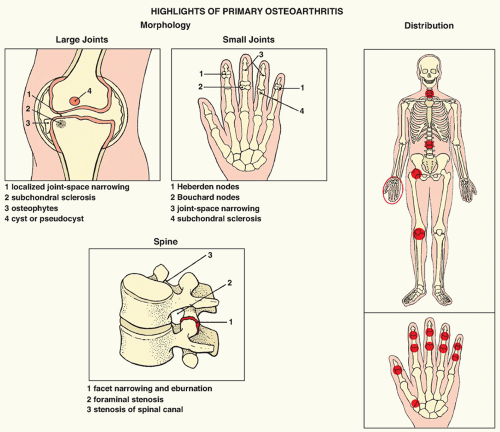 FIGURE 13.1 Highlights of the morphology and distribution of arthritic lesions in primary osteoarthritis. |
The radiographic findings are the same as those described for primary osteoarthritis, but the features of the underlying process also can often be detected. Although the standard radiographic views are usually sufficient for demonstrating these changes, CT, arthrography, or MRI may at times be needed for a more accurate assessment of the status of the articular cartilage.
TABLE 13.1 Clinical and Radiographic Hallmarks of Degenerative Joint Disease | |||||||||||||||||||||||||||||||||||||||||||||||||||||||||||||||||||||||||||||||||||||||||||||||||||||||||||||||||||||||||||||||||||||||||||
|---|---|---|---|---|---|---|---|---|---|---|---|---|---|---|---|---|---|---|---|---|---|---|---|---|---|---|---|---|---|---|---|---|---|---|---|---|---|---|---|---|---|---|---|---|---|---|---|---|---|---|---|---|---|---|---|---|---|---|---|---|---|---|---|---|---|---|---|---|---|---|---|---|---|---|---|---|---|---|---|---|---|---|---|---|---|---|---|---|---|---|---|---|---|---|---|---|---|---|---|---|---|---|---|---|---|---|---|---|---|---|---|---|---|---|---|---|---|---|---|---|---|---|---|---|---|---|---|---|---|---|---|---|---|---|---|---|---|---|---|
| |||||||||||||||||||||||||||||||||||||||||||||||||||||||||||||||||||||||||||||||||||||||||||||||||||||||||||||||||||||||||||||||||||||||||||
 FIGURE 13.3 CT of osteoarthritis of the hip. Coronal reformatted image shows diminution of the joint space, osteophytes, and subchondral cysts in the femoral head. |
on the oblique axial CT or oblique axial MR images (Fig. 13.14). Radial reformatted MR images are of particular value in this respect because they allow optimal visualization of the anterosuperior region of the femoral head/neck junction, where the most significant changes in the alpha angle occur (see Fig. 13.14B). The normal alpha angle should not exceed 50 degrees. The larger the alpha angle, the more pronounced is nonspherical shape of the femoral head, and the greater is predisposition for anterior FAI.
each of which may be affected by degenerative changes. The radiographic features of these changes are similar to those seen in osteoarthritis of the hip, including narrowing of the joint space (usually one or two compartments), subchondral sclerosis, osteophytosis, and subchondral cyst (or pseudocyst) formation. The standard anteroposterior and lateral projections of the knee are sufficient to demonstrate these processes (Fig. 13.15). If the medial joint compartment is affected, the knee may assume a varus configuration, which is best demonstrated on the weight-bearing anteroposterior view (Fig. 13.16A); involvement of the lateral compartment may lead to a valgus configuration (Fig. 13.16B). CT and three-dimensional (3D) reconstructed CT images may provide additional information as to the status of osteoarthritic process (Fig. 13.17). A frequent complication of osteoarthritis of the knee is the formation of osteochondral bodies, which can be demonstrated on the standard projections of the knee (Figs. 13.18 and 13.19); however, MRI may also be effective in this respect (Figs. 13.20, 13.21, 13.22). The femoropatellar joint compartment is also commonly involved in primary osteoarthritis. The lateral radiograph of the knee and axial view of the patella are the most effective means of visualizing degenerative changes of the femoropatellar compartment (Fig. 13.23).
 FIGURE 13.17 3D CT of osteoarthritis. (A) Radiograph of the right knee of a 58-year-old man shows advanced osteoarthritis. (B,C) 3D reconstructed CT images in shaded surface display demonstrate advanced three-compartmental osteoarthritis.
Stay updated, free articles. Join our Telegram channel
Full access? Get Clinical Tree
 Get Clinical Tree app for offline access
Get Clinical Tree app for offline access

|
